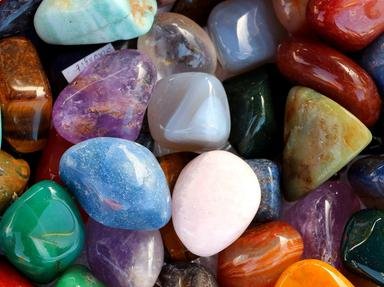Quiz Answer Key and Fun Facts
1. References to emerald occur in Latin, Egyptian, Sanskrit and other ancient records. What can we say with certainty about all the stones mentioned?
2. Emeralds from Sandwana were considered the finest in the world, until the discovery of the Colombian mines. What is the current (2004) name of the country where Sandwana emeralds were found?
3. What coloring agent produces the distinctive green of emerald, according to the Gemological Institute of America?
4. Emerald is part of which mineral family?
5. Some stones from the same mineral family are also green but paler and clearer than emerald. Which coloring agent causes this?
6. Other gemstones from the same family as emerald include all but which of these?
7. Which of these properties is not mystically conferred by the emerald upon its wearer, according to gemologist and folklorist George F. Kunz?
8. Compared with related beryl gemstones, emerald could be accurately called which?
9. A mineral called bixbite is described for commercial purposes as a type of emerald. Why is this controversial?
10. The "emerald filter" is used in gemology to distinguish emerald from other similar-appearing stones. This filter is also known as...
Source: Author
ragiel
This quiz was reviewed by FunTrivia editor
ozzz2002 before going online.
Any errors found in FunTrivia content are routinely corrected through our feedback system.

